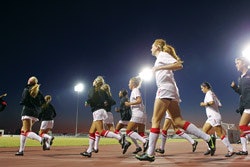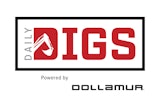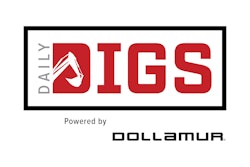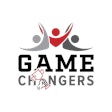This past fall, the San Diego State University women's soccer team reached the NCAA Sweet 16 for only the second time in the Aztecs' history, finishing the season with a record 21 wins and only two losses.
 (Photos courtesy of San Diego State University Athletics)
(Photos courtesy of San Diego State University Athletics)
This past fall, the San Diego State University women's soccer team reached the NCAA Sweet 16 for only the second time in the Aztecs' history, finishing the season with a record 21 wins and only two losses. The team saw attendance at one of its tournament games top 1,500, well above the team's previous single-game high of 575.
Not to discredit the hard work and skill of the athletes, but even head coach Mike Friesen thinks the addition of new field lights to the SDSU Sports Deck, located atop a parking structure, played a huge part in a glowing season. "One, we had an amazing season, which creates more support," he says, "but the lights also helped create an environment that was fun for people to come and watch the games. Prior to this season, the latest we would play was 4 p.m. If our men had a tournament, we'd play at 11 a.m. on a Friday morning. You're not going to get anyone there at that time."
As simple as it might sound, field lighting is helping to boost soccer's popularity at all levels. It's not just about increasing the fan base, but the participation demographics, as well. "There are now many more adults who played as youths and want to continue to play recreationally," says Greg Griffith, director of development with the Washington, D.C.-based U.S. Soccer Foundation. "Most people work, and when they get off work, the fields are typically being used by youth organizations. Adults have to wait until they're done. In almost every location, that means that it's dark. The ability to have lighted fields opens up the opportunity for adults to participate in soccer where they couldn't before."
The Idaho Falls and Skyline high schools' soccer teams made their primetime debuts this past season on the two new lighted soccer fields at the Idaho Falls Sports Complex. The addition, as well as two unlighted fields, was in response to increasing demand for playing fields in the area, but Mackay Hanks, a former Bonneville Youth Soccer board member who helped oversee the fields' construction, expects that the lighted fields will drive even more demand.
"The big problem with fall sports in Idaho is that it starts getting dark early," says Hanks, referring to the local high school teams that play at the complex. "We had games starting at 3 p.m., kids leaving school early, having to get to games. Parents couldn't make the games. The idea was that we would be able to put the high school teams on there in order to try to boost soccer as a spectator sport."
Understanding what spectator support can mean to players on the field (and possibly to the budget), getting more people to SDSU soccer games was a goal from the beginning of the season. "We want to create an atmosphere, a culture of a European nature," Aztec men's head coach Lev Kirshner told utsandiego.com in August of the "Stack the Deck" campaign organized around the men's first night game. "We want chants and songs and all of that energy. ⦠That's what we're gunning for."
The roar of the crowd combined with the "primetime" feel created by the lights generates an energy that fuels both the players and the spectators. "As a kid, when you went to the big rivalry basketball game and those high school kids were on the court, they were your idols," says Hanks. "For soccer, kids don't have anywhere to go to look up at the older kids and put the top-level athletes on a pedestal. We want to capture these kids' adoration."
One more benefit, at least in San Diego, is the difference night games mean in terms of physical energy, says Friesen. "In a climate like ours, the weather isn't too extreme one way or another, but it does have some effect if we play day games every time with the sun and the heat," he explains. "It does the same thing for the fans. There's no shade or anything for them. A 1 p.m. game when it's 85 degrees is not that fun to watch from a fan perspective."
 IN THE LIMELIGHT Spurred by the primetime atmosphere, the Aztec women's soccer team celebrated a stellar season.
IN THE LIMELIGHT Spurred by the primetime atmosphere, the Aztec women's soccer team celebrated a stellar season.Soccer has slowly been working its way into the spotlight of the American sports stage, a process Griffith credits to the 1994 FIFA World Cup held in the United States, as well as the growth of minority groups for whom soccer is the only football they've ever known. "It used to be every time there was a soccer field built, there was also a baseball field built," he says. "Now we're seeing more like three soccer fields for every baseball field."
The turf fields in Idaho Falls, says Hanks, are used nearly nonstop on weekends from March until late October, demonstrating the need for more fields. But not all areas of the country are fortunate enough to have space available for field expansion. "I talked to the director of a 5,000-youth soccer club in New York," Griffith says. "I asked if there was room for a full-size field, and she said, 'What's a full-size field? We play on whatever size there is.' "
Where more fields aren't an option, communities often look to other solutions to keep up with demand, such as upgrading to synthetic turf or adding lights. Both require a significant investment, and both can be hard to get approved. Even after the SDSU soccer program had the funding in place for its lighting system, its construction wasn't guaranteed. "We had to go through a lot of things as far as the community was concerned," says Friesen. "The number of days we would have the lights on, the environmental impact. They finally figured out in March that it was a go."
Idaho Falls had similar concerns about whether the lights would be an issue to neighbors in a nearby subdivision, highlighting one of the most common obstacles faced by field lighting projects. "Controlling off-site spill light is always an important issue," explains Jeff Rogers, vice president of sales at Musco Lighting in Oskaloosa, Iowa, which supplied the lights at the Idaho Falls complex. "The best lighting systems redirect wasted spill light back onto the playing surface, which eliminates neighbor complaints about trespass light on their properties, increases the light level on the field and will save energy."
"It's a very modern lighting system," says Hanks. "You step three or four steps off the field and it's completely dark. The change is amazing. The technology really helped make the sale."
Communities that opt to increase playability by upgrading to synthetic turf often find themselves considering lighting, as well. "We've seen more people when they're putting in synthetic that want to put lights in at the same time," explains Griffith. "The idea is that, 'Hey, we're making this investment, let's put lights in as well, and get more value out of that larger investment.' "
Though the developments in technology have made field lighting an easier sell to communities in recent years, the demand for lighting has been present much longer, prompting the U.S. Soccer Foundation to team up with Musco in 2002 to develop a set of soccer-specific lighting standards. "We were hearing, 'We want to do this, what's the best way to do this?' " says Griffith, whose organization has also teamed up with Musco to offer an annual grant program for field lights, in addition to the grants the U.S. Soccer Foundation offers for irrigation and synthetic turf.
The lighting requirements, not surprisingly, aren't very different from those needed for football, but there are some considerations required for any lighting project. "From a player perspective, each sport has differences that impact the lighting needs, including size of the ball, the speed the ball travels, and whether the play is primarily at ground level or aerial," explains Rogers. "A baseball is smaller and travels faster, so higher light levels are needed for baseball than for soccer. Most of the soccer play is in front of the goal to the corners, which can impact pole locations to eliminate glare zones for players."
While limiting light spill is an obstacle for community fields, the lights at SDSU's Sports Deck, were intentionally designed to also illuminate the walking track around the field, and Friesen thinks the light helps get people's attention. "Honestly, I don't think students knew that there was a field up there," he says, referring to the Sports Deck's rooftop location. "But when those lights come on, it's like the surface of the sun. It's unbelievable what it lights up; 20 or 30 yards around the field is like daylight. When they're on, you definitely know something's going on up there."
 LIGHTING A FIRE Lights allow games to be played at times that are more likely to draw spectators, adding additional energy and excitement to the game.
LIGHTING A FIRE Lights allow games to be played at times that are more likely to draw spectators, adding additional energy and excitement to the game.As soccer draws more players and spectators, lighted fields and nighttime games are only the beginning, as the increasing crowds illuminate the need for better overall facilities. "One of the meetings we're going to have will be to discuss how it went for us, talk about how we can increase fan intensity and how we can go further and ride the momentum we have right now," says Friesen. "We have to address a few things. One is adding more bleachers. Also, we have a track around our field, which doesn't make it ideal for watching a game, and our bleachers, from what I understand, were supposed to be raised up five feet - but they ran out of money so the thing that went was the risers."
Getting the money to simply invest in lighting or other field improvements is difficult, though, especially at schools that are already hard-pressed for resources. "Athletic directors and soccer have always had a rough relationship," says Hanks. "Football is a moneymaker, basketball is a moneymaker. They put a lot of energy into those sports to keep them going."
The Aztecs' record-setting soccer attendance pales in comparison to the football program's average 2011 per-game attendance of more than 28,000 and revenue of almost $2.4 million, making it understandable that the school would place football projects high on its priority list. "When I got here in 2004, they kept saying this would be the next project," says Friesen of the lighting system. "To be quite honest, I had lost hope. I saw so many other projects happen on campus and in the athletic department that got going before ours."
In the end, it was private donations to help cover the cost of the $1.3 million project that helped bump the lights to the top of the list. Well, that and the football program, which takes advantage of the halo the Sports Deck's lights cast on the ground below it. Explains Friesen, "On the back of our fields are football practice fields, so one of the things that ended up making the project go was that the lights also benefitted our football team."
But the evidence suggests that soccer has the potential to become a moneymaker if it can get that investment of energy and resources. Says Hanks, "We're hosting the youth state tournament this year, and a big reason we're able to host that is because we have all these fields and can offer an extended schedule. The tournament is a large revenue-producer for the league."
The increased revenue can be fed back into the facilities to improve and expand, meeting the demands of an increasing fan base. "This year we lined up bleachers on one side of the fields and benches on the other," adds Hanks. "We'll make a push for a scoreboard, and the fields are prewired for a PA system. I think our final product is still years away, but we've planned ahead. What we'd like is to have at least the games at the top level be treated as any other sport, having announcements, warm-up music, scoreboards, controlled access and tickets."
The Bonneville Youth Soccer League is fortunate enough to have the support of a city and parks and recreation department that understand what the organization is trying to accomplish, but even so, Hanks understands that it's going to be a while before all of that happens. "What we're hoping for is a change in the culture," he says. "We're laying the groundwork for making it more of an event, a spectator sport. We don't expect that overnight. But we're never going to get there without nighttime games."





































